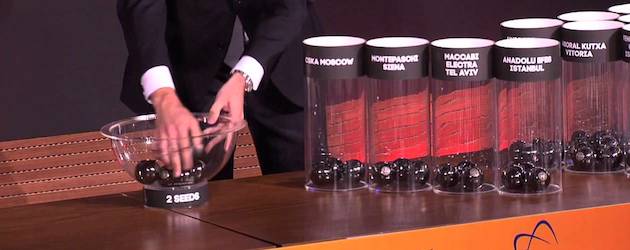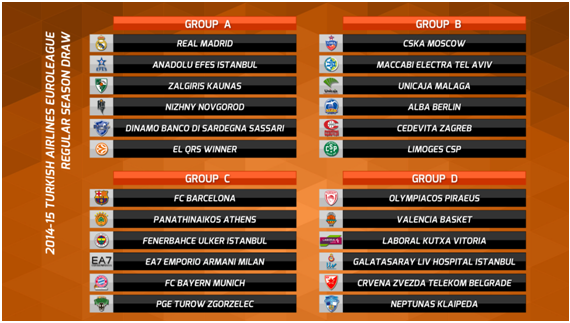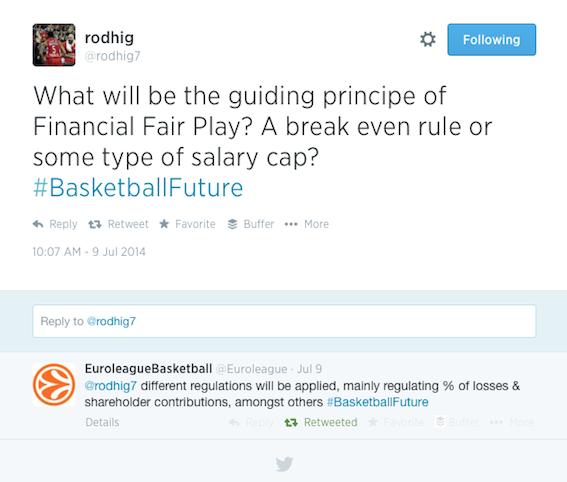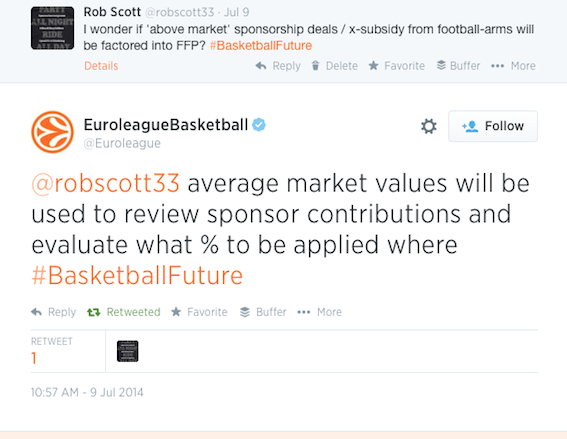The draw for the 2014/15 Euroleague Regular Season and Qualifying Round has been completed, marking the transition between the past season and the new. The results are below:
The competition format is unchanged from recent seasons. At the end of the regular season, the top four teams from each group will continue on to the Top 16, while the remaining eight squads will join the second phase of the Eurocup. After the Top 16, the top four of the two eight-team groups move on to the best-of-five playoffs. Those series winners will meet with the title at stake at the 2015 Final Four at the Barclaycard Palacio de los Deportes in the Spanish capital from May 14 to 17.
The groups look a tad unbalanced at first look, although it would be a rare draw that spat out a symmetrical set of matchups. There will be a Top 16 team from last season kicked into Eurocup from Group C, with Barcelona, Panathinaikos, Fenerbahçe, EA7 Milano and Bayern Munich all together. Group A by contrast will see at least one relative minnow survive. Even if UNICS Kazan and their magic Rouble-tree make it through the QR, Nizhny Novgorod and Dinamo Sassari could slip into the fourth spot, with Zalgiris still hanging around as well.
Group D is barely any easier than C, with five well-endowed squads battling out for four spots. Neptunas Klaipeda might wonder what they have signed up for. Its possible that Group B would have the smoothest profile if the strength of each team was plotted on a graph, but as ever there is plenty of time for new signings to be made, expectations to be shifted accordingly, and instant reactions like these to be made fun of.
Roadmap to the Future
Perhaps more significant than the draw, this week also saw announcements about the format for next season’s competition, and further measures to engineer the terrain of the European game. The Euroleague Commercial Assets Shareholders Meeting took place in Barcelona yesterday, during which an agreement was made to “begin work on a roadmap toward a comprehensive model for European club competitions in the future.”
That comprehensive model appears some way off, but it “envisions a pyramid model for European competitions… the ultimate vision for the competition model would mirror the time-honored European sports structure of promotion and relegation in a hierarchy that moves from domestic leagues through the Eurocup to the Turkish Airlines Euroleague. The model respects a European sports culture that values competitive results first even as it shows a clear path to the elite for clubs wishing to invest in long-term projects and gives stability to those who have already achieved that status.”
The ECA Shareholders approved the proposal of the ECA Executive Board, whose June 25 announcement referred to an agreement to be sought between “between ECA and the domestic leagues on promoting, organizing and coordinating competitions to homogenize European professional basketball, creating a framework that would allow Euroleague Basketball and the domestic leagues to take the next steps towards an eventual European League model.” (our emphasis)
However, by yesterday, the language had been modified to refer to “a transition period to be spent working with domestic leagues, clubs and other stakeholders to refine the model… the shareholders charged Euroleague Basketball with seeking agreement with domestic leagues to homogenize basketball rules, calendars, player eligibility and financial fair play, amongst others.”
Financial fair play is ruefully topical in the week that legendary Italian club and erstwhile A-licence holder Mens Sana Siena was declared officially bankrupt. It was on the agenda at Euroleague’s first ever Clubs Convention, where over 100 representatives of clubs and domestic leagues gathered in Barcelona to dive into the buffet, exchange business cards and do the kind of talking that only sports management professionals can pull off. A Twitter Q&A session was actually remarkably forthright as these things go:
In a sport where the leading clubs often rely almost entirely on the largesse of sponsors or dynastic family investment, it will be fascinating to see what kind of regulatory gymnastics are necessary to maintain the investment needed to raise standards to those that Euroleague as a competition aspires to.
Next Season
The format for 2015/16 has been confirmed, and there are some welcome changes. Gone is the rune-reading of the B-Licence country rankings and the dark art of predicting next year’s body of teams. A-licences will be limited to three-per-country, as Unicaja has already found out to its cost, and B-licences will be fixed at two for the Adriatic League and one each for France, Germany, Italy, Poland, Russian Federation, Spain and Turkey. One wild card per season will be granted and the Eurocup champion will continue to receive a one year C licence.
The process for selecting Euroleague teams has been criticised by many for being opaque and confusing for fans. Whatever the pros and cons of the new ‘transition’ system, at least it is easy to follow. Working out where the transition is taking us may prove a lot more difficult.
 Posts
Posts



